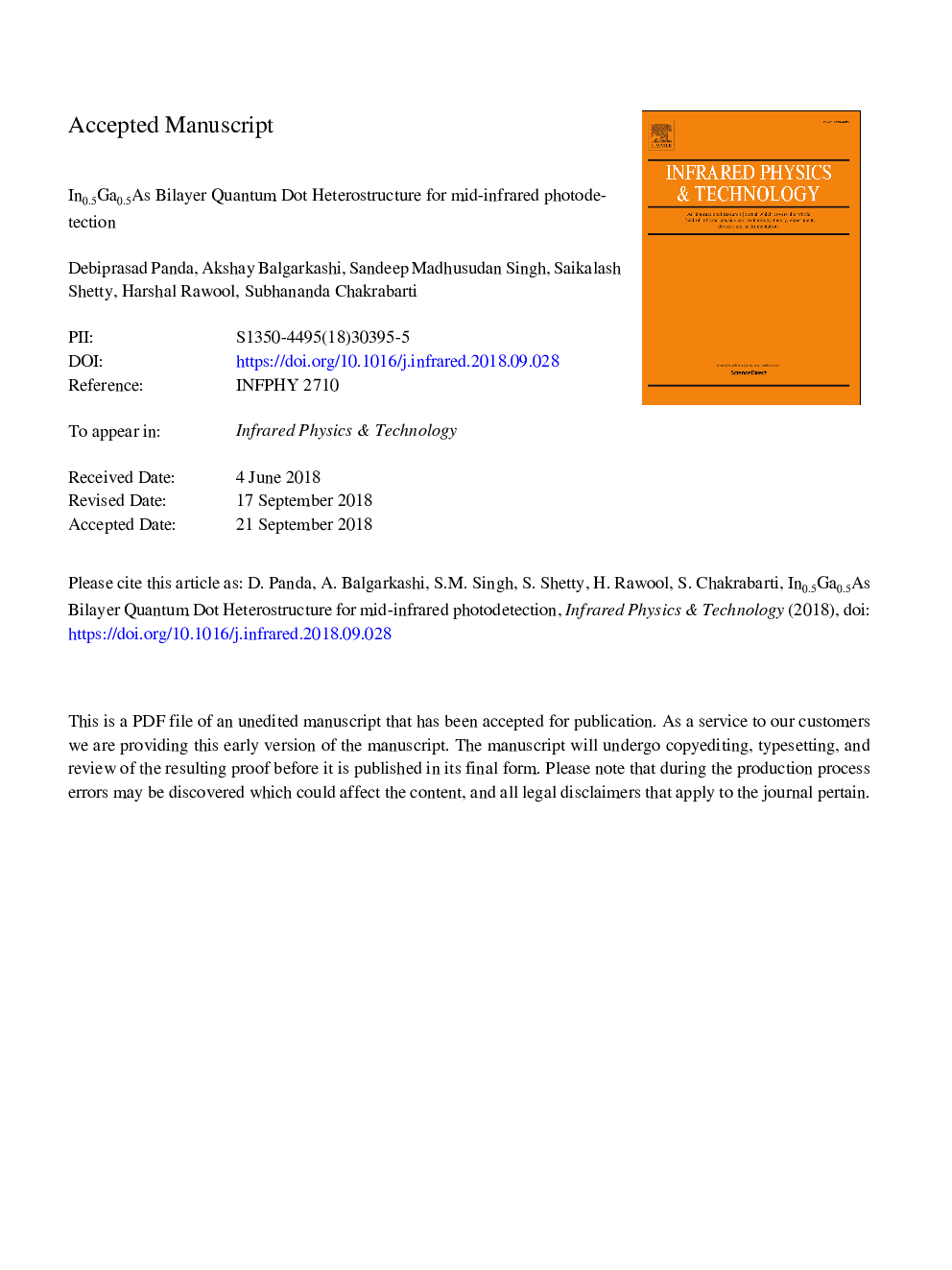| Article ID | Journal | Published Year | Pages | File Type |
|---|---|---|---|---|
| 11032104 | Infrared Physics & Technology | 2018 | 10 Pages |
Abstract
Strain-coupled Bilayer quantum dot (QD) heterostructures have taken over single layer QD structures due to their longer wavelength emission, homogeneity in dot size distribution and optimum dot density. The optoelectronic characteristics of In0.5Ga0.5As Bilayer QDIP along with photoresponse in the mid-infrared regime have been shown in this article. The heterostructure is grown with a 6.5â¯nm GaAs spacer between the seed and top QD layers, following a new growth strategy. The monolayer coverage for top QD layer is less compared to the seed layer. However, a similar QD size has been observed for both layers due to the existing strain propagation from seed to top QD layer through the GaAs spacer. Moreover, the presence of strain reducing In0.15Ga0.85As capping layer on the top QD has an active participation in preserving the QD size, inhibiting In-Ga intermixing. The room temperature photoluminescence (PL) emission peak from the device is obtained near communication wavelength (1.31â¯Î¼m). The lower full width half maximum (FWHM) of 21â¯meV and higher activation energy of 326â¯meV for the QDIP attribute homogeneity in dot size distribution and higher barrier potential respectively. The proposed Bilayer QDIP has a broad spectral response in the mid-infrared regime (6-8â¯Î¼m) with very low dark current density (4Eâ7â¯A/cm2) and high responsivity (33â¯mA/W) at â2V and 75â¯K. The measured efficiency for the QDIP is 0.18%.
Related Topics
Physical Sciences and Engineering
Physics and Astronomy
Atomic and Molecular Physics, and Optics
Authors
Debiprasad Panda, Akshay Balgarkashi, Sandeep Madhusudan Singh, Saikalash Shetty, Harshal Rawool, Subhananda Chakrabarti,
